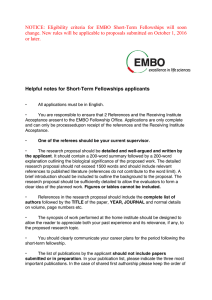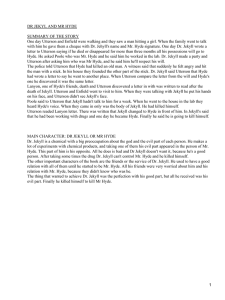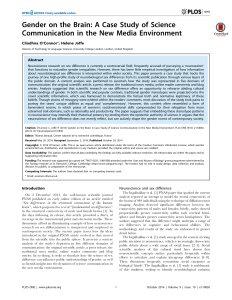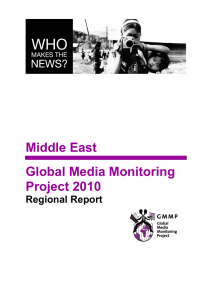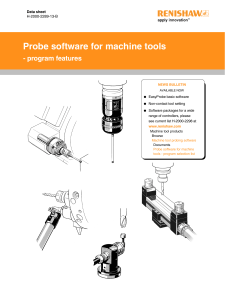Women in Science
Anuncio
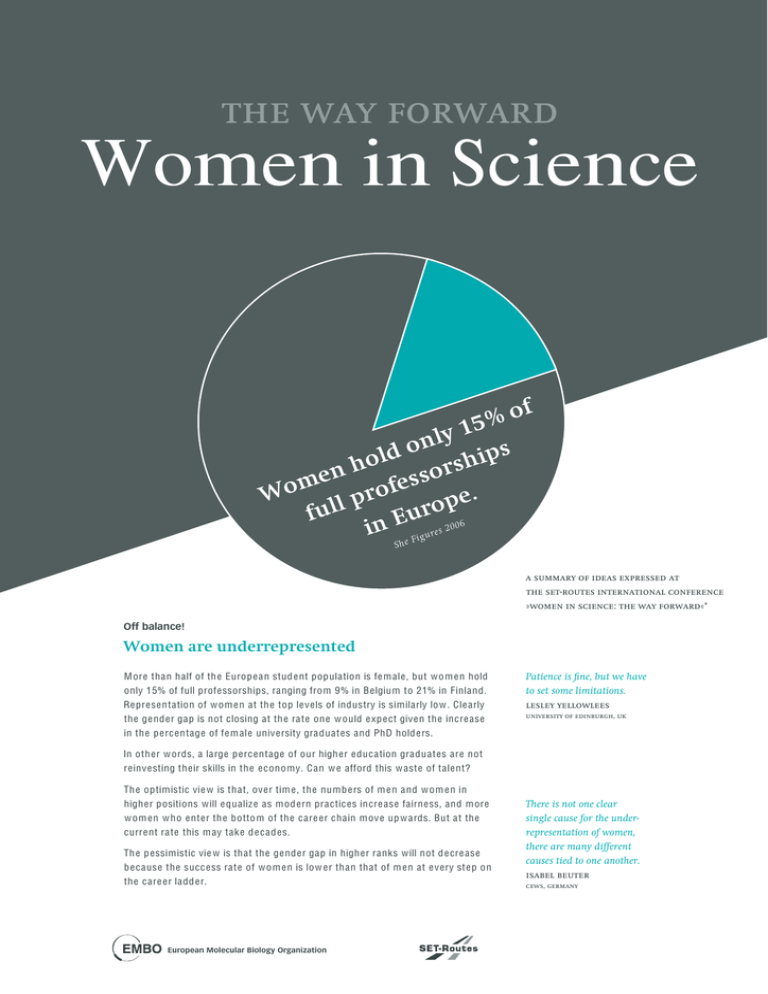
the way forward Women in Science o % 5 y1 l n s do p l i o h en h fessors m Wo ll pro e. p o fu ur 2 0 0 6 E n i e Figures f Sh a summary of ideas expressed at the set-routes international conference »women in science: the way forward«* Off balance! Women are underrepresented More than half of the Europe an student population is fe m ale, but w om en hold only 15% of full professorships, ranging from 9 % in Belgium to 21% in Finland. Representation of w om en at the top levels of industry is similarly lo w . Cle arly the gender gap is not closing at the rate one w ould expect given the incre ase in the percentage of fe m ale university graduates and PhD holders. Patience is fine, but we have to set some limitations. lesley yellowlees university of edinburgh, uk In other w ords, a large percentage of our higher education graduates are not reinvesting their skills in the economy. Can w e afford this w aste of talent? The optimistic vie w is that, over tim e, the numbers of m en and w om en in higher positions will equaliz e as modern practices incre ase fairness, and more w om en w ho enter the bottom of the care er chain move up w ards. But at the current rate this m ay take decades. The pessimistic vie w is that the gender gap in higher ranks will not decre ase because the success rate of w om en is lo w er than that of m en at every step on the care er ladder. European Molecular Biology Organization There is not one clear single cause for the underrepresentation of women, there are many different causes tied to one another. isabel beuter cews, germany Women lack the social and professional support that men receive throughout their careers After having done a lot of meta analyses on gender differences in psychological variables, it was becoming very clear to me that all these stereotypes about enormous gender differences in psychological characteristics and ability are just not well founded in the scientific data. janet hyde university of wisconsin-madison, usa 1 Hyde JS (2005) The Gender Similarities Hypothesis. American Psychologist 60: 581– 592 Are there differences? Men and women are very similar Populist books promote a vie w of insurmountable differences bet w e en m en and w om en, apparently explaining w hy m en and w om en achieve differently – thereby reinforcing traditional stereotypes. Recent scienti c literature ho w ever reports that the differences bet w e en m en and w om en are very sm all in 80 % of m e asurable traits (Hyde 2005).1 There is gre ater variation within e ach sex than there is bet w e en the m. The differences in traits that can be considered to be of prim ary importance in intellectual discourse, such as m aths or language perform ance, are very sm all. And the variation in those traits w here a difference is detectable – physical aggression, motor perform ance, m e asures of sexuality and spatial rotation abilities – cannot directly explain w hy there are so fe w w om en in higher positions. Pervasive negative gender stereotypes The self-fulfilling prophecy I believe that girls’ disinterest and lack of confidence in their ability to succeed in math and science has its roots in their very early years. To a huge degree girls’ disaffection is related to their own perception of their ability to succeed in math and science, not to their actual ability. rosalind barnett brandeis university, usa We continue to adhere to gender stereo types that harm w om en’s self-este e m and self-belief. Most of us, m en and w om en alike, have unconscious stereotypes that m ake us associate m en with care ers and w om en with fa milies. These stereotypes traditionally evolved in order to help society function. On the other hand, the sa m e stereotypes place m en and w om en in speci c roles, thereby blocking societal change. As a result of stereotyping, girls are not expected to perform w ell in m aths and science in school. Consequently, girls’ self-con dence in these subjects is diminished. In the m anner of a self-fullling prophecy, this le ads to fe w er w om en pursuing the study of the “hard” sciences. Breaking the stereotype barrier As m e mbers of society, w e have to becom e a w are of our biases if any re al changes are to take place. Data suggest that our social environm ent has a large effect on ho w our un conscious biases and stereotypes are form ed and expressed. Role models can in uence the expression of these stereotypes. How do these stereotypes affect women who choose scientic careers? Very fe w studies have compared m en’s and w om en’s care er paths in the sciences on a multinational level. Ledin et al 2 reported that w om en on average are only 80% as successful as their m ale counterparts w hen applying to the EMBO Long-Term F ello wship Progra m m e. The study sho w ed that: ■ Wom en tend to allo w their partner’s care er to take precedence – for exa mple, they more frequently follo w their partners to a ne w job. ■ Wom en generally be ar the m ajor responsibility for childcare and accumulate ‘tim e out’ periods from their care ers. ■ On average, w om en w ork shorter hours than m en due to fa mily com mitm ents. Simply telling women that a math test favors males will lead to poor performance on their part. This is why I get so concerned about the mass media portrayals of girls as lacking in certain abilities. janet hyde university of wisconsin-madison, usa Are men overconfident and women realistic or are men realistic and women underconfident? brian nosek university of virginia, usa 2 Ledin A, Bornmann L, Gannon F, Wallon G (2007) A persistent problem. Traditional gender roles hold back female scientists. EMBO Rep 8: 982– 987 Consequently, w om en, on average, publish fe w er papers during their e arly care ers than their m ale counterparts. The Way Forward What can be done to improve career prospects of women in the sciences? Women can help themselves by: ■ Placing importance on their care ers ■ Se eking training and help to plan and succe ed in their care ers ■ Being more self-promoting ■ Being more self-con dent ■ Sharing responsibility for their fa milies with their partners ■ Spe aking out against discrimination. The most efficient way that we got the mostly male department chairs to attend our workshop on gender equity was via the funding agencies. The funding agencies twisted their arms and got them to attend. geraldine richmond university of oregon, usa Funding agencies and institutions have an important role to play in promoting best practice to address gender bias at the institutional level. Sm all progra m m es that address the speci c ne eds of w om en can help to bridge the gap but it is institutional culture that has to change. It is within institutions that talent is fostered and young scientists are inspired and encouraged to follo w a rese arch care er path…or not! Som e of today’s best practice exa mples have be en highlighted in the UK by the Athena SWA N A w ard, in the USA they are supported by the National Science Foundation ADVA NCE progra m m e. These initiatives are highly successful because they improve the w orking conditions for both m en and w om en. Raising people’s a w areness of the stereotypes that they hold helps to level the playing eld. The actions that promote change should be gender neutral and create better professional and employment environments for men and women. Both men and women benefit from good practice; however, women in particular are adversely affected by bad practice. lesley yellowlees university of edinburgh, uk Ways that work We need more research: we need a longitudinal study that allows us to follow males and females along their career paths. This would finally tell us why women and men leave the academic career track. And we need to focus more on disciplinary differences, as the retention rate of women is different for different disciplines. Improving w orking conditions and bringing equality to the w orkplace should bene t both m en and w om en and allo w us to take advantage of the intellectual resources of all of society. The best initiatives are therefore those that w ork to expose and combat gender bias both in professional and fa mily environm ents, and cre ate a fair and supportive environm ent at hom e and in the w ork place. Effective means to empower men and women: ■ Supporting students at all levels and encouraging m en and w om en into m aths- and science-related subjects ■ Re aching out to students to help the m plan care ers ■ Finding appropriate m entors for young scientists ■ Offering exible w orking hours to m en and w om en with fa milies ■ Improving childcare provision ■ Providing care er advice and help for people w ho follo w their partners to a ne w job ■ Changing institutional culture – highlighting good practice, improving the w orking envirom ent and re moving unconscious bias ■ Working to w ards transparent selection and advance m ent processes and educating selection com mitte es about unconscious bias ■ Ensuring that w om en are fairly represented on com mitte es that set policy and control funds ■ Supporting studies that bring to light the roots of gender bias in science. isabel beuter cews, germany Some of our efforts within the ADVANCE program are focused around what in a lot of places seems to be the most opaque of all processes… and that is promotion and tenuring. herbert killackey university of california, irvine, usa All links can be found at w w w .e mbo.org/gender/ w ayforw ard ■ She Figures 2006 Europe an Com mission ■ Beyond bias and barriers: Fullling the potential of women in academic science and engineering The National Acade mies ■ The gender similarities hypothesis Janet Shibley Hyde (2005) American Psychologist 60: 581– 592 FOR MORE INFORMATION ➔ about The Way Forward ■ Same difference: Gender myths are hurting our relationships, our children and our jobs. Rosalind Barnett and Cheryl Rivers ■ Institutional change: Good Practice in University Chemistry Departments Athena Project and Royal Society ■ NSF ADVANCE ■ www.set-routes.org/conference ■ www.embo.org/gender/wayforward A DVD of th e k ey talks fro m th e SET-Rout es int ernational confere nc e Women in Science: The Way Forward * (h eld in Heid elb erg in M ay 2007) is available upon re qu est. Ple ase se nd an e m ail to w o m e n@e m bo.org. * Th e confere nc e Women in Science: The Way Forward w as organiz e d w ithin SET-Rout es, a proje ct to e ncourage m ore girls and w o m e n to study and w ork in Scie nc e, Engin e ering and Te chnology (SET). SET-Rout es is a joint proje ct b e t w e e n EMBL, EMBO and CERN. It is nanc e d by th e EU 6th Fra m e w ork progra m m e. © 2007 EMBO ■ text: Gerlind Wallon (EMBO), Sam Caddick (EMBO) ■ editing: Julia Willingale-Theune (EMBL) ■ layout, graphics: Uta Mackensen (EMBO) FURTHER READING ➔
